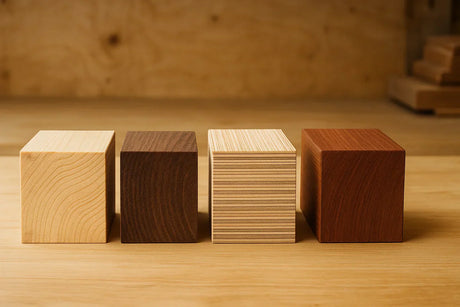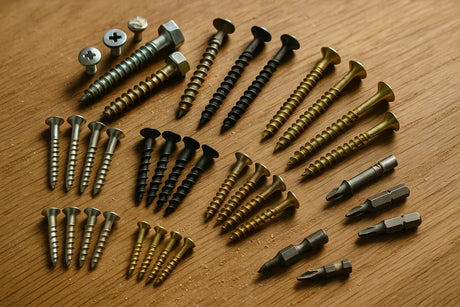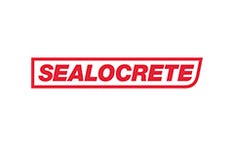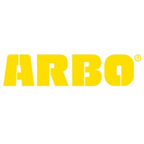Whether you're refreshing tired interior walls, upcycling furniture, or protecting exterior surfaces from the elements, paint is one of the most cost-effective ways to transform a space. But with so many types of paint available—each with its own properties, finishes, and best-use scenarios—choosing the right one can be overwhelming.
This guide will walk you through the most common types of paint used in DIY and renovation projects, helping you match each type to the right surface for a long-lasting, professional-quality finish.

1. Emulsion Paint – Best for Interior Walls and Ceilings
Emulsion paint is water-based, low-odour, and dries quickly, making it ideal for interior surfaces. It’s available in a variety of finishes:
- Matt Emulsion – Non-reflective with a velvety appearance. Great for concealing imperfections on walls and ceilings.
- Silk Emulsion – Slightly shiny and more washable. Ideal for high-traffic rooms like hallways and children’s bedrooms.
- Satin Emulsion – A soft sheen that offers a modern finish with better durability and cleanability than matt.
Tip: Look for mould-resistant or stain-resistant emulsions when painting kitchens, bathrooms, or damp-prone areas.

2. Gloss and Satinwood Paint – Durable Finishes for Wood and Metal
Gloss and satinwood paints are great for doors, skirting boards, bannisters, and metal railings:
- Gloss Paint – Highly reflective with a mirror-like finish. Excellent durability and ideal for trim and exterior metalwork.
- Satinwood Paint – Lower sheen than gloss, offering a more modern look for interior woodwork.
Both are available as:
- Oil-based – Long-lasting but slower drying with stronger fumes.
- Water-based – Quick drying with low odour, ideal for indoor DIY.
DIY Tip: Lightly sand between coats to achieve a smooth, professional finish.

3. Masonry Paint – Built to Withstand the Elements
Masonry paint is designed for exterior surfaces and offers:
- Waterproofing to protect against rain
- Breathability for older walls
- UV and dirt resistance to maintain appearance
Types include:
- Smooth masonry paint – Neat, uniform finish
- Textured masonry paint – Covers imperfections
Use it on: Brick, concrete, pebbledash, or render.

4. Eggshell and Chalk Paint – Ideal for Furniture and Decorative Finishes
Eggshell and chalk paints are ideal for upcycling furniture or feature walls:
- Eggshell Paint – Low-sheen and durable, great for cabinetry and trim.
- Chalk Paint – Easy to apply with a vintage finish. Requires sealing with wax or lacquer for protection.
5. Specialist Paints – For Surfaces That Need Extra Protection
Specialist paints are designed for challenging conditions and surfaces:
- Anti-Mould and Bathroom Paints – Prevents mould in damp areas.
- Heat-Resistant Paint – For radiators and fireplaces.
- Floor Paints – Slip-resistant and hardwearing for garages and workshops.
- Direct-to-Metal Paints – With anti-rust properties for long-term protection.
- Plastic Paints – Bonds to PVC, uPVC, and plastic trims.
- Tanking Slurry – A cementitious coating for creating a waterproof barrier in basements, cellars, and retaining walls.
- Roof Seal Paint – Waterproofs and protects tiles and flat roofs. UV-resistant and ideal for repairing cracks and porous areas.
Always check the label or technical data sheet to ensure compatibility with your surface and conditions.

6. Varnishes and Wood Stains – Enhancing and Protecting Timber
Though not paints in the traditional sense, varnishes and wood stains are essential finishes used to protect and enhance the natural beauty of wood. They are especially common in joinery, flooring, furniture restoration, and garden projects.
- Wood Stains – Penetrate the surface to change the colour of the wood while still showcasing the grain. Available in water- or oil-based formulas, they’re ideal for fences, decking, cladding, and furniture.
- Varnishes – Create a hard, clear or tinted protective layer over wood surfaces. They come in gloss, satin, or matt finishes and are often used on floors, handrails, and worktops where durability is key.
Some modern products combine stain and varnish for a one-step finish, while others offer UV protection or are suitable for exterior use. Always choose a product that matches your wood type and intended environment.

🎯 Why Proper Masking Is Essential
Masking before painting protects areas you don’t want to paint and delivers a cleaner finish.
Use masking tape for:
- Skirting boards
- Window frames
- Switches and sockets
- Door handles and trim edges
Benefits of proper masking:
- Clean lines and edges
- Protects surfaces
- Reduces cleanup time
- Improves final finish
Masking Tips: Use low-tack tape for delicate areas, press edges firmly to prevent bleed, and remove tape while paint is still tacky.

🖌️ Types of Brushes and Rollers – Get the Right Tools for the Job
Paint Brushes
| Brush Type | Best For |
|---|---|
| Flat Brush | Doors, panels, wide surfaces |
| Angled Brush | Cutting in edges, corners |
| Round Brush | Detail work and mouldings |
| Synthetic Bristles | Water-based paints |
| Natural Bristles | Oil-based paints and varnishes |
Paint Rollers
| Roller Type | Best For |
|---|---|
| Short Pile (5–7mm) | Smooth surfaces like plaster |
| Medium Pile (8–12mm) | Lightly textured walls/ceilings |
| Long Pile (13mm+) | Rough surfaces, masonry, render |
| Foam Rollers | Gloss and satin on wood or metal |
Use extension poles for ceilings and high walls to save time and reduce strain.
How to Choose the Right Paint for Your Project
| Surface | Recommended Paint |
|---|---|
| Interior walls/ceilings | Emulsion (Matt/Silk/Satin) |
| Wood trim/skirting | Gloss or Satinwood |
| Furniture/kitchen units | Eggshell or Chalk Paint |
| Exterior walls | Masonry Paint |
| Radiators/fireplaces | Heat-Resistant Paint |
| Damp areas | Anti-Mould or Bathroom Paint |
| Garage/workshop floors | Floor Paint |
| Metal surfaces | Direct-to-Metal Paint |
| Plastic (e.g., uPVC) | Plastic Primer + Topcoat |
Final Tips for a Professional Finish
- Prep properly: Clean, sand, and prime before painting.
- Use quality tools: Good brushes and rollers improve the finish.
- Check weather: Avoid painting outdoors in extreme heat or cold.
- Follow drying times: Don’t rush between coats.
Conclusion: The Right Paint Makes All the Difference
Choosing the right paint for the right surface can dramatically improve your results. From breathable masonry coatings to satin finishes for skirting boards, there's a solution for every job. Take your time, prepare your surfaces, and invest in the proper tools to get a finish that lasts.
Ready to Paint Like a Pro?
Browse our range of high-quality paints, primers, and decorating tools at DIYRefurb.co.uk and give every surface the perfect finish.



















